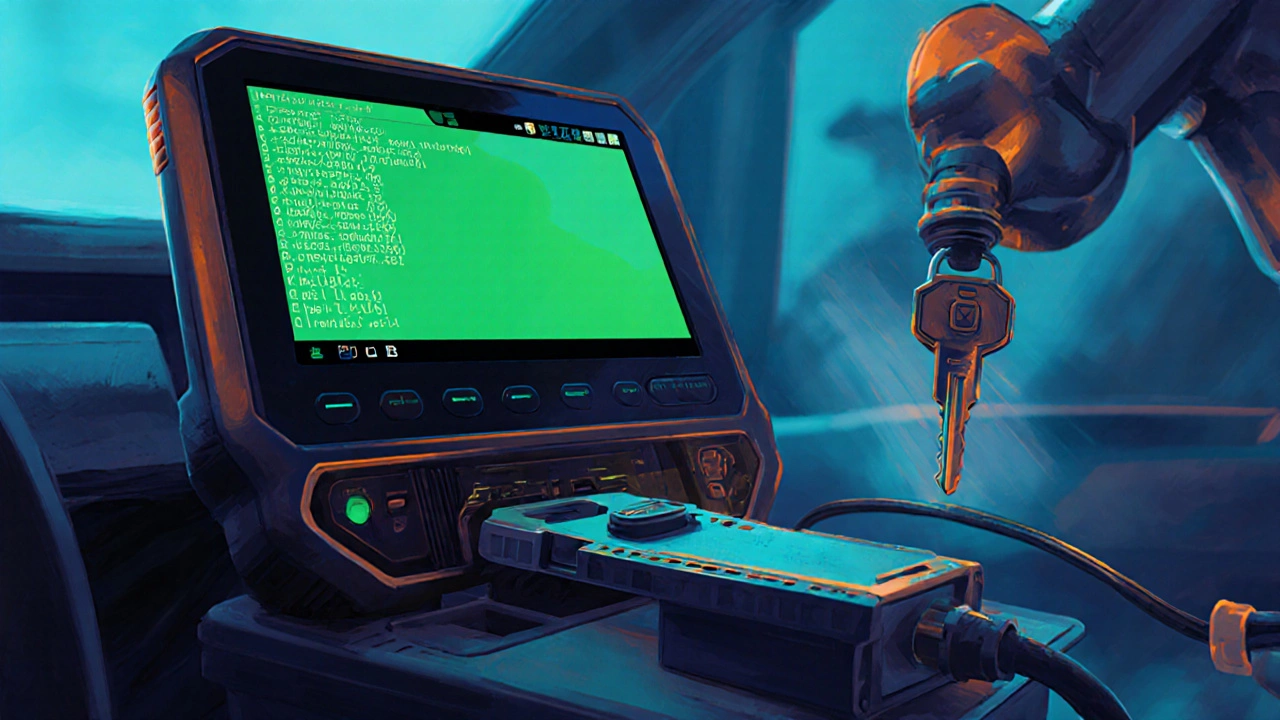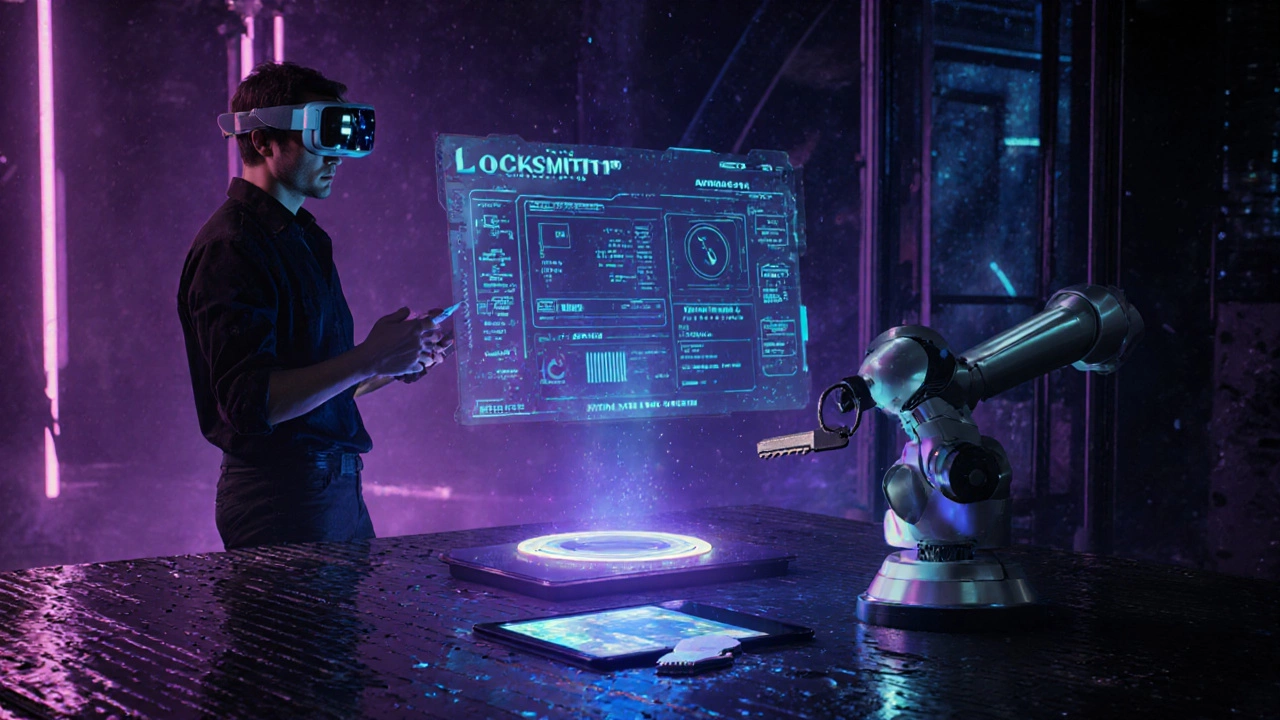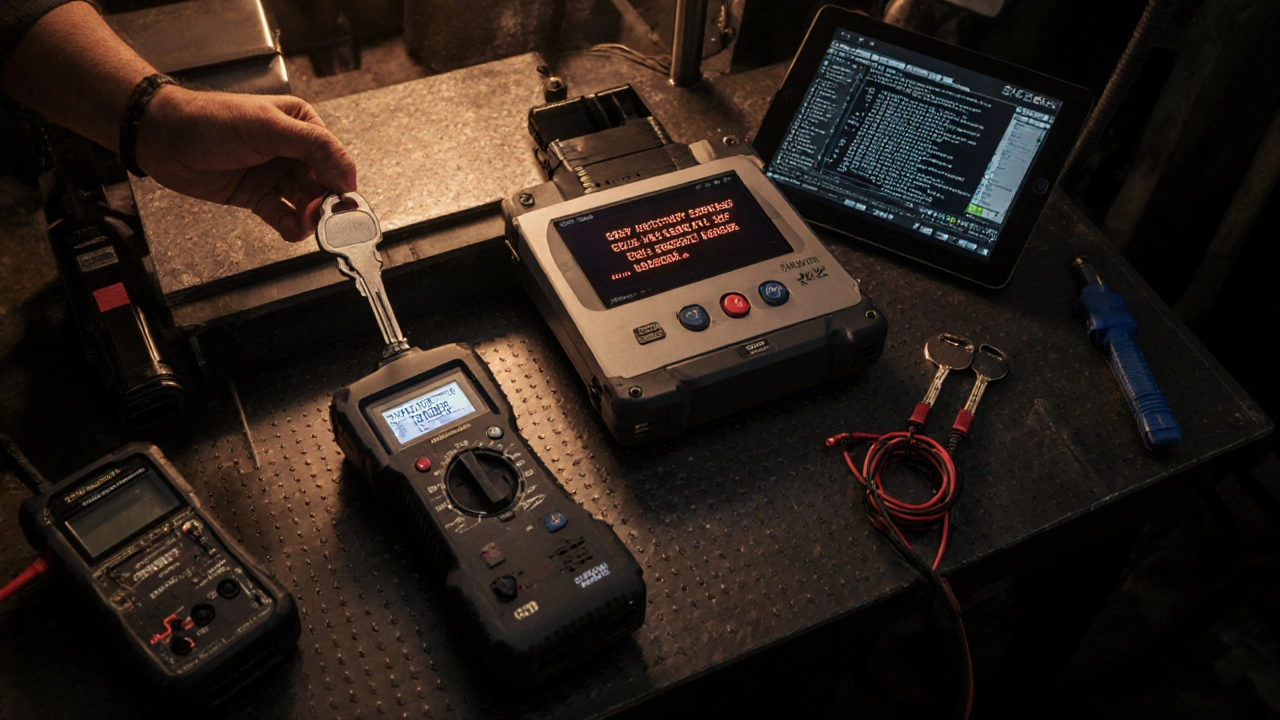Locksmith Key Programming Tool Selector
Recommended Tool Set
Your ideal setup based on your requirements:
Key Considerations
Ever wondered what’s inside a locksmith’s toolbox when they’re programming a brand‑new car key? It’s not just a drill and a blank key - there’s a whole suite of electronic gadgets that talk to a vehicle’s immobiliser, copy the chip data and even test remote fobs. This guide breaks down every piece of hardware you’ll find on a modern locksmith’s bench, explains how each works, and shows you how to pick the right one for the job.
What a locksmith actually programs
Before we list the tools, it helps to know what’s being programmed. In today’s cars a “key” can be any of the following:
- Transponder key - a metal blade with a tiny RFID chip that the engine control unit (ECU) reads when the key is inserted.
- Remote key fob - a plastic case that sends a radio signal to lock or unlock the doors.
- Smart key - the “push‑to‑start” system that combines a transponder chip with a wireless proximity sensor.
All of these need the same basic data: a unique code stored in the vehicle’s immobiliser system. The locksmith’s job is to read that code (or generate a matching one) and write it onto the new key’s chip.
Core hardware a locksmith uses to program keys
The toolbox can be split into three functional groups: reading devices, programming devices, and supporting equipment.
1. EEPROM / Chip Readers
These handheld units pull the transponder’s data straight from the original key or from the vehicle’s communication bus. They’re often called EEPROM readers. A typical workflow is:
- Insert the original key into the reader’s slot.
- Press “Read” - the device displays the hexadecimal code.
- Save the code to the programmer or a USB stick.
Popular models include the Xhorse Pro Reader and the Advanced Diagnostics (AD) Reader Pro.
2. Stand‑alone Key Programmers
The heart of any key‑programming operation is the key programmer. Unlike a laptop‑based solution, a stand‑alone programmer contains its own processor, screen, and built‑in vehicle database, so it works even in a shop without internet.
Key programmers perform three main tasks:
- Read the existing key’s code (or pull it from the ECU via OBD).
- Write the code onto a blank transponder.
- Clone remote functions such as door lock/unlock and panic alarms.
Because cars keep adding new encryption methods, modern programmers can update their firmware over the air, ensuring they stay compatible with 2024‑2025 models.
3. OBDII Scanners with Programming Capability
On many newer cars the immobiliser data lives in the ECU and is only accessible through the OBDII port. A capable OBDII scanner can both diagnose faults and act as a bridge for the key programmer.
Steps usually look like this:
- Plug the scanner into the OBDII jack under the dashboard. \n
- Select the “Key Programming” module and let the scanner communicate with the ECU.
- Transfer the retrieved code to the stand‑alone programmer or directly write it to a new key if the scanner supports that.
Devices such as the Autel MaxiIM EVO and Launch X431 Pro have built‑in key‑programming modules, collapsing the scanner and programmer into one unit.
4. Key Cutting Machines
Once the electronic data is set, the physical key must match the car’s lock profile. That’s where a key cutting machine comes in. Modern machines read the original key’s bitting pattern via a sensor and use a CNC‑style cutter to produce an exact replica.
For transponder keys, the cut‑and‑program workflow usually runs like this:
- Read the original key’s code with the EEPROM reader.
- Program the code onto a blank transponder.
- Cut the blank key to match the original’s physical profile.
Top machines include the Ilco Blitz 500 and the Silca RapidMax, both of which integrate directly with most programmers for a single‑step workflow.
5. Supporting Gear
Other items you’ll see on a locksmith’s bench are:
- Battery‑powered key encoders for low‑volume jobs.
- Portable digital multimeters to verify voltage on OBD lines.
- Smartphone or tablet with proprietary software (used when the programmer requires a companion app).
While not directly involved in programming, they make the job smoother and reduce downtime.

How to choose the right programming tool
Not every locksmith needs a $3,000 Xhorse VVDI2. Your choice depends on three factors: vehicle coverage, workflow style, and budget.
- Vehicle coverage - If you serve mostly European makes, look for a programmer with a strong database for BMW, Audi, and VW. For Asian models, prioritize support for Hyundai, Kia, and Toyota.
- Workflow preference - Some technicians like a single device that does scanning, reading, and programming (e.g., Autel MaxiIM EVO). Others prefer a modular approach: separate reader + programmer + cutter for flexibility.
- Budget ceiling - Entry‑level programmers start around £400, while high‑end models can exceed £2,500. Remember to factor in annual software subscription fees, which can be £100‑£200 for database updates.
Below is a quick comparison of three popular choices in 2025.
| Model | Price (GBP) | Supported Key Types | Vehicle Coverage | Standalone or PC‑Based |
|---|---|---|---|---|
| Xhorse VVDI2 | £1,980 | Transponder, Smart, Remote | Worldwide (200+ makes) | Standalone with optional PC link |
| Autel MaxiIM EVO | d>£2,250 | Transponder, Smart, Remote, Keyless | Strong in US/European/Asian | Standalone + integrated OBD scanner |
| Launch X431 Pro | £1,350 | Transponder, Remote | Focus on Asian & US models | PC‑based (tablet) + OBD module |
All three can read and write EEPROM data, but the Xhorse and Autel units have the edge when it comes to smart‑key cloning because they include dedicated RF modules.
Typical step‑by‑step workflow
Here’s a condensed checklist that most locksmiths follow when a customer asks for a new key:
- Identify the vehicle - Grab the VIN, confirm the model year and trim. This tells you which key type you’re dealing with.
- Connect the OBD scanner (if needed) - Plug into the OBDII port and let the device pull the immobiliser code.
- Read the original key - Use an EEPROM reader to capture the transponder data if the car’s ECU does not expose it.
- Program the blank - Load the retrieved code into the stand‑alone programmer and write it onto a new transponder.
- If the key includes a remote, program button functions in the same session.
- Cut the physical key - Place the blank into the key cutting machine, import the bitting code, and let the cutter mill the blade.
- Test the new key - Verify that the vehicle starts, doors lock/unlock, and any proximity functions work.
- Document the job - Record the VIN, key type, and programming date for future reference.
Following this checklist reduces the odds of a missed step that could force a costly re‑program.

Common pitfalls and how to avoid them
- Outdated firmware - Manufacturers release security patches regularly. Always check for updates before starting a job.
- Wrong key blank - Even within the same model year, a car can use several blank types. Verify the blank part number against the VIN.
- Battery voltage drop - Some OBD scanners require a stable 12V supply. Keep the car’s battery charged or use a portable jump‑starter.
- Interference on RF programming - Remote fob cloning can be disrupted by nearby Wi‑Fi or Bluetooth devices. Perform RF steps in a low‑interference environment.
- Ignoring privacy regulations - In the UK, you must obtain the vehicle owner’s consent before pulling immobiliser data. Keep records of consent to stay compliant with GDPR.
Future trends: what’s coming next?
Key technology is moving fast. By 2026 we expect:
- More cloud‑based key programming where the programmer streams data directly from the OEM’s server, eliminating the need for large local databases.
- Integration of Bluetooth Low Energy (BLE) in smart keys, meaning future programmers will need BLE sniffers in addition to RFID readers.
- Increased use of mobile‑only apps on Android tablets, turning the device itself into a lightweight programmer when paired with a small dongle.
Staying current means subscribing to firmware updates and following OEM announcements - otherwise you’ll find yourself stuck with a tool that can’t handle the newest German models.
Frequently Asked Questions
Do I need a separate OBDII scanner if I already own a key programmer?
Most high‑end programmers (e.g., Autel MaxiIM EVO) have a built‑in OBD module, so you can skip a dedicated scanner. However, entry‑level models often rely on an external OBD device to access the ECU’s immobiliser data.
Can I program a key without the original?
Yes, if the vehicle’s ECU allows “key addition” via OBD. The programmer will read the immobiliser code directly from the car and write it to a blank key. This works on most cars after 2005, but some manufacturers lock the function to the original key for security.
What’s the price difference between a stand‑alone programmer and a PC‑based solution?
Stand‑alone units typically start around £1,200 and go up to £2,500 for premium models. PC‑based kits, which require a laptop or tablet, can be cheaper (£600‑£900) but you’ll need to buy a compatible OBD dongle and pay for software licences.
How often should I update my programmer’s database?
At least once a month. New car models are released every few weeks, and OEMs often patch encryption methods. Most manufacturers offer a subscription that automatically pushes updates.
Is a key cutting machine really necessary for transponder keys?
Yes. The electronic chip can be programmed on any blank, but the physical cut must match the vehicle’s lock. Without a precise cutter, the key may not turn, leading to a wasted chip and extra cost.
